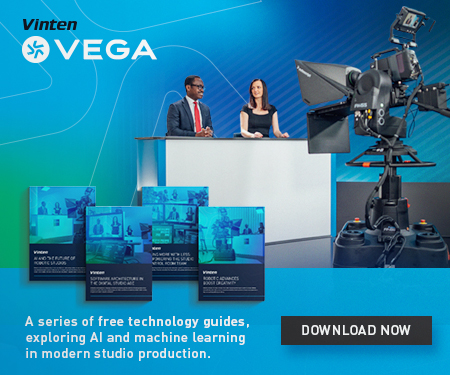Industry Insights: How IP production is changing sports and live events

Subscribe to NewscastStudio for the latest news, project case studies and product announcements in broadcast technology, creative design and engineering delivered to your inbox.
What’s the biggest misconception about IP right now?
“There’s general confusion surrounding the term IP, as it can mean something totally different to a broadcaster than to an OTT (over the top) provider. Broadcast IP is a whole different ball game, because broadcasters are using the IP format to recreate the same experience viewers receive via cable or over the air with the least latency possible. Whereas latency is acceptable to some degree in OTT, it is not in live broadcast,” said Bryce Button, director of product marketing, AJA Video Systems. “That said, there are still challenges on both sides – from finding the right recognition of devices on a network to striking a balance between all the devices to minimize latency.”
“Cost reduction. We are still on the early stages and the needed IP infrastructure, software license upgrades and hardware upgrades are still expensive. However early adopters will benefit from being at the forefront of an industry change that will eventually affect all Sports productions,” adds Jorba.
“Lots of discussion was about using IP to save wiring, but IP is an enabler. It enables a software defined workflow. It makes possible to have the production in cloud. It addresses the core of what today’s broadcast industry core needs: ‘produce more content at lower cost,'” notes Shen.
“There are two big misconceptions right now. The first is that IP delivers substandard footage that’s good enough for the web but not much else. With today’s advanced encoding technology and robust cellular networks, companies like JVC deliver broadcast-quality live HD video over IP. The other misconception is that IP-based production is too complex. In reality, it’s not difficult at all to pair a camera with an LTE modem or hotspot, and camera configuration is pretty straightforward, too,” said D’Amico.
Engineering Misconceptions
“There is a lingering perception that IP for high quality video is clumsy, requires some form of data compression for transport and must therefore involve complex procedures when switching sources. Nothing could be further from the truth! IP data rates are now capable of supporting multiple uncompressed 4K UHD data steams with ‘timed’, seamless and clean switching whilst also maintaining very low latency,” said Francis.
“One of the biggest challenges today is providing a pathway for customers to transition from their current SDI infrastructure to a hybrid and ultimately an IP infrastructure.” said McCoy.
“When it comes to IP-based solutions today, engineering teams are really concerned about three things: cost, complexity and change management. It is true that compared to quad SDI solutions, IP-based solutions are still 8 to 12% more expensive upfront. But the real challenge is the risk of being stuck with 4K-only infrastructure for the next 10 years. That’s a risk assumption that really needs to be taken into consideration.” added Hans.
“Contrary to some opinions, implementing an IP workflow doesn’t have to be overly complicated nor must you go all in on IP right away. For instance, broadcasters that don’t have IP cameras might use BNC connectors or HDMI cables to convert their signal from SDI to IP. We’re actually seeing a lot of hybrid systems that combine both SDI and IP technologies, enabling some of the benefits of IP without a total infrastructure overhaul immediately. For content being streamed to CDNs for OTT needs, there are a ton of tools available that make the transition easier, like our HELO recording and streaming device, which allows users to connect from cameras, decks or output cards, plug into the network and stream directly to a CDN,” said Button.
Stay tuned next week for more of our Industry Insights roundtable discussion on sports and live produciton.
Participants
Ofir Benovici – Avid
Bryce Button – AJA Video Systems
Joseph D’Amico – JVC Professional Video
Kim Francis – Snell Advanced Media
Nicolas Hans – Videlio
David Jorba – Vizrt
Dan May – Blackmagic Design
Patrick McCoy – Imagine Communications
Paul Shen – TVU Networks
[focus-on]This article is part of our Focus On Sports and Live Production. View more from the series here.[/focus-on]
Subscribe to NewscastStudio for the latest news, project case studies and product announcements in broadcast technology, creative design and engineering delivered to your inbox.



tags
AJA Video Systems, avid, Blackmagic Design, Bryce Button, David Jorba, event production, field production, Harry Samler, Imagine Communications, IP, IP Production, ip workflow, Joseph D’Amico, JVC, JVC Professional Video, Kim Francis, Nicolas Hans, Ofir Benovici, Patrick McCoy, Paul Shen, SAM, Snell Advanced Media, sports production, TVU Networks, Vizrt
categories
Broadcast Engineering News, Broadcast Facility Technology, Broadcast Industry News, Event Production, Exclusives, Featured, Heroes, Industry Insights, Sports Broadcasting & Production, Voices